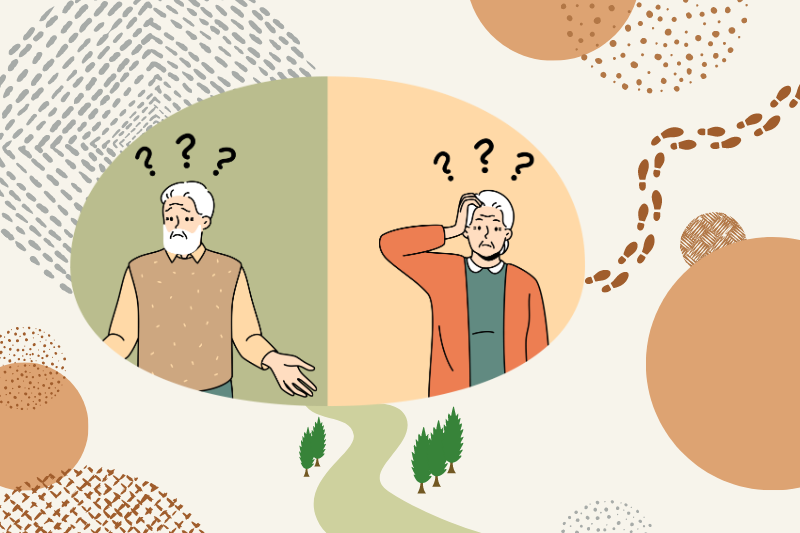
As nations battle for AI supremacy, what about the cost of creative destruction?
4 August 2023
Empowering Novices to become Experts: Impact of the Legal English Project 培養初學者成爲專家:法律英語項目之影響
15 September 2023Effects of Public Housing Neighbourhoods on the Risk of Dementia Among Hong Kong Older Adults

Principal investigator: Prof Derrick HO Hung-chak (Department of Public and International Affairs)

Public housing is a major component of the housing in Hong Kong, with nearly half of the population now residing in some form of public housing. Like many other economies worldwide, Hong Kong is facing rapid population ageing. According to the housing figures announced by the Housing Bureau, as at 31 March 2022, there were some 179,800 elderly households (i.e. all household members were aged 60 or above) in Hong Kong Housing Authority (HA)’s Public Rental Housing (PRH) flats, representing 23% of all households in HA’s PRH flats. While dementia is one of the most common neurodegenerative disorders among the elderly, there is urgent need that the government should take into consideration the impact of the living environment of public housing to the risk of dementia among seniors in Hong Kong, for the urban planning in future.
Prof Derrick HO Hung-chak, Assistant Professor of CityU’s Department of Public and International Affairs, has recently published a research article in Public Health journal with Prof Tracy LU Shiyu, Assistant Professor of CityU’s Department of Social and Behavioural Sciences and other researchers, entitled “How do forms and characteristics of Asian public housing neighbourhoods affect dementia risk among senior population? A cross-sectional study in Hong Kong”. The study evaluated how form/characteristics in public housing neighbourhoods may be associated with dementia among seniors in Hong Kong. Particularly, the research team aimed to find out whether slope/terrain and walking paths in hilly environment would yield the association between built environment and dementia.
A total of 2,077 seniors living in Hong Kong’s public housing estates were surveyed in the study. 859 subjects (41.4%) were associated with dementia. Dementia was measured by a Cantonese version of Montreal – Cognitive Assessment. Built environment was measured based on three dimensions (greenery, walkability, accessibility), including 11 metrics. Circular buffers (without walking paths) and service areas (considering walking paths) with two-dimensional/three-dimensional (terrain) adjustment were applied to quantify forms/characteristics of neighbourhoods. Two different scales were applied to determine the living environment: immediate distance (200m) and walkable distance (500m) from their residence. Besides covariates of medical history, other covariates regarding sociodemographic information and lifestyle characteristics included age, gender, body mass index (BMI), sleep quality, smoking status, alcohol consumption, low education, unhealthy diet, quality of life and activities of daily living, are also included. Exposure-by-exposure regressions were applied to evaluate the associations between form/characteristics of neighbourhood and dementia.
This study used four forms/characteristics of neighbourhoods (2D/3D circular and 2D/3D service area) with two spatial distances (200m and 500m) to evaluate the association between built environment and dementia across hilly public housing estates in Hong Kong. Overall, measures of walkability and accessibility were negatively associated with dementia, but measures of greenery were positively associated with dementia. Specifically, public spaces were not associated with dementia, whereas leisure and transportation facilities as well as land use mix and building coverage were only significant in the case of circular buffers where no consideration was given to walking paths. In the case of service area by which attention was given to walking paths, the only significant result related to walkability and accessibility was the negative association between community facilities and dementia.
In conclusion, the study results found that the effects of walking paths were much more significant than influences from terrain. Hong Kong’s hilly terrain and inaccessible greenery may negatively affect the seniors’ fear and the motivation to move around, which further influencing their abilities of spatial navigation. As a result, dementia risk was increased. For better healthy living, the research team suggested that improvements regarding design of public housing estates should include building more community facilities, major transportation facilities and leisure facilities along walking paths. With the walking paths, negative effects of steep slopes could be minimised. Otherwise, the functionality of these facilities might be reduced because of inaccessibility even the spatial distance may be close. In future, measurement of neighbourhood effect should be linked with local terrain and road networks so that community plans to optimise a self-managed lifestyle could be developed effectively and appropriately.
Achievement and publication
Ho, HC, Song, Y, Cheng, W, Liu, Y, Guo, Y, Lu, S, Lum, T, Chiu, RLH & Webster, C 2023, ‘How do forms and characteristics of Asian public housing neighbourhoods affect dementia risk among senior population? A cross-sectional study in Hong Kong’, Public Health, vol. 219, pp. 44-52. https://doi.org/10.1016/j.puhe.2023.03.014
